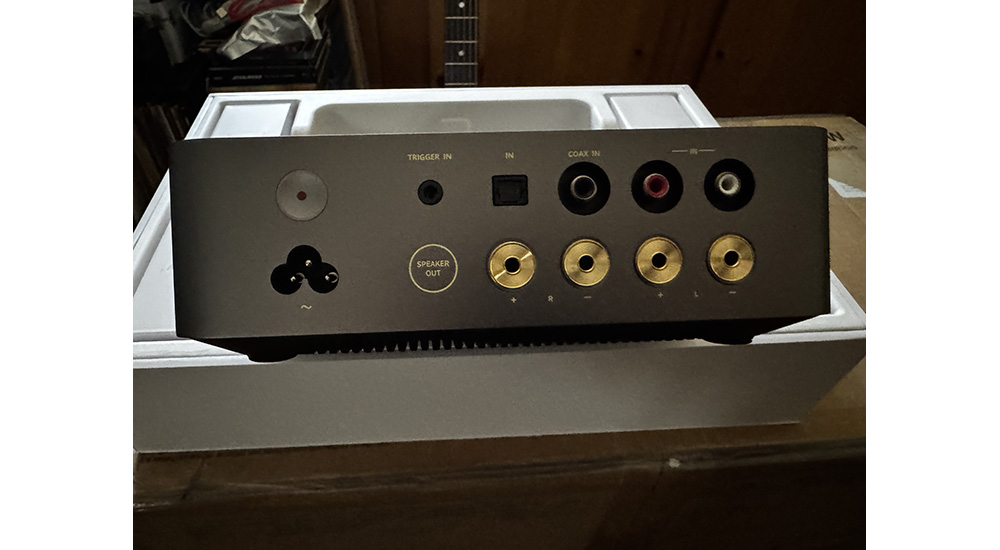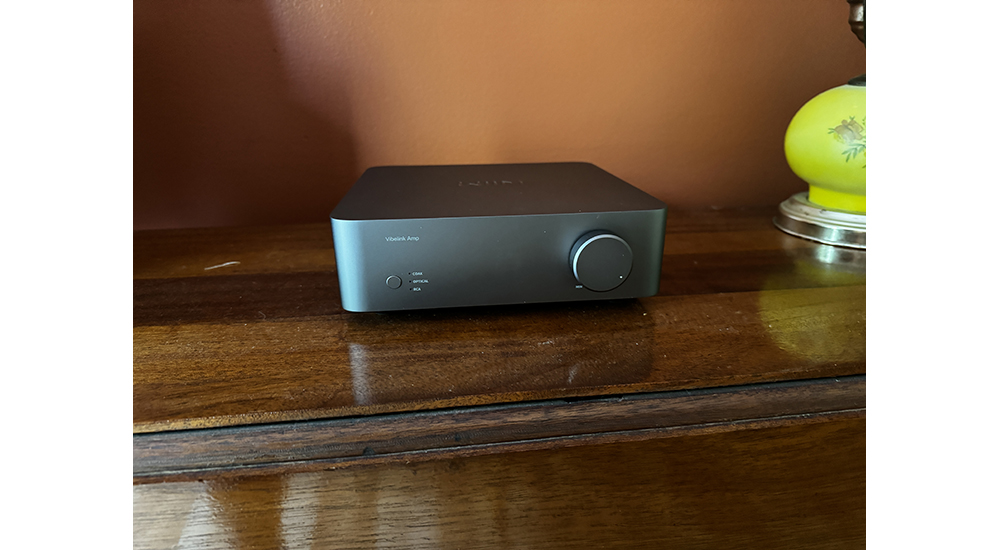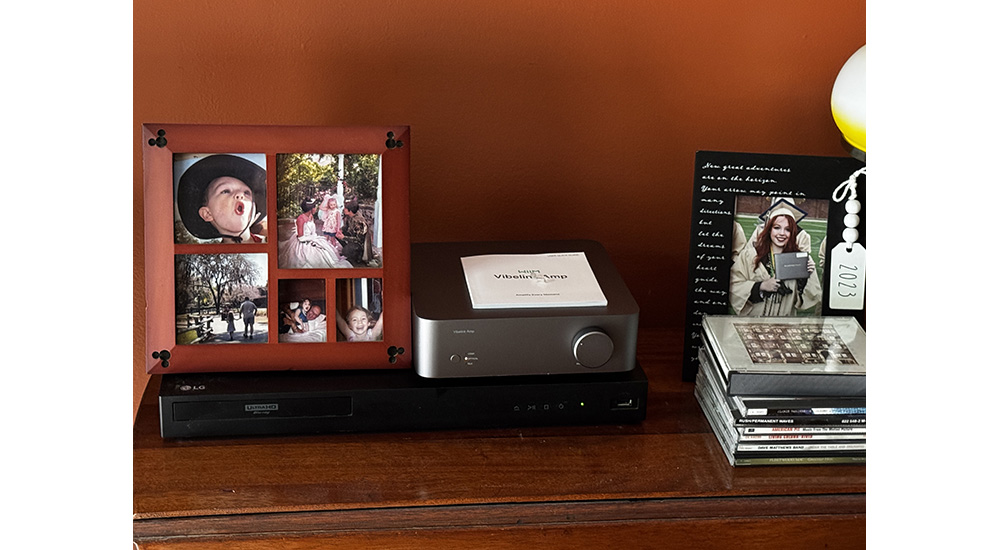Over the past couple of years the home audio company WiiM, has made a name for itself by offering music fans modern home audio solutions that deliver lots of bang for the buck. With the introduction of the Vibelink amplifier, the company continues its value proposition.
Like other WiiM products, the small-footprint Vibelink Amplifier can be used in modern smart home environments to power everything from traditional stereo setups to AV systems that include TVs, gaming consoles, and set-top boxes (STBs).
Where the new WiiM amplifier differs from other new-age amplifiers is that it leaves out most of the streaming functionality that people have become accustomed to with new home audio products to provide users with an amp that delivers a more purist approach.
CE Pro & Cons
Pros:
- The amp delivers high levels of sound quality for a reasonable price
- The Vibelink Amp’s small footprint allows for placement in locations that other amps may not fit
- With its straight-forward approach to audio reproduction there are no complicated menus or other types of user interfaces to learn
Cons:
- An HDMI input would be nice to make the connections to an AV system more versatile
- WiiM could explain its goals with the Vibelink Amp to help better ensure users have a better understanding of the product’s capabilities and how it fits into the modern home audio landscape
WiiM Vibelink Features
As I mentioned earlier, the new Wiim amplifier offers a small footprint—7.9 inches wide x 8.4 inches deep x 2.6 inches high. Available in a choice of space gray or silver, the 4.5-pound amplifier utilizes Class D amplification technologies, as well as Wiim’s Post-Filter Feedback (PFFB) technology, which is said to overcome a set of connected speakers’ load dependency.
The Vibelink Amplifier is rated to deliver 100-watts-per-channel into an 8-ohm load, and it includes internal components such as an ESS 9039Q2M DAC chip for digital-to-analog conversion, as well as the company’s Bit-Perfect Playback capabilities that supports PCM digital audio up to 24-bit/192kHz. Other features include Wiim’s Pure Analog Input that does not apply digital processing to the signal.
In addition to the amp’s pair of left/right analog inputs, the Vibelink also provides a digital optical (TOSLINK) and coax digital (S/PDIF) inputs.
Other features the amp incorporates include a 12-volt trigger input, gold-plated binding posts, an auto standby mode; a front-panel volume knob and LED indicators that communicates the selected source and amp status.

The Vibelink’s rear panel includes speaker connections, analog RCA and digital inputs. (photo credit: Bob Archer CE Pro)
Additional Specs:
- Rated to produce 100-watts-per-channels into 8 ohms
- RCA analog inputs, as well as digital coax and digital optical inputs
- The amp utilizes the Sabre ESS 9039Q2M DAC chip for digital-to-analog conversion
- 12-volt trigger options provide control flexibility
- MSRP is $299
Setup
Getting going with the Vibelink Amplifier does not take long. After I unpacked the amplifier, which is protected with some very impressive packaging, I placed the amp on a table. Inside the packaging, Wiim includes some basic connectivity cables—as well as two pairs of banana-plug connectors to make the connection of bare-wire speaker cables easy. In my case I prefer speaker cables with banana plugs so I did not need to strip speaker cable and attach the solderless banana plug connectors to the cables, my cables are already terminated with banana plugs.
Related News: Lutron Launches New Aviena Toggle Keypad for Luxury Markets
My next connection was to run an optical cable from an LG UltraHD disc player to the optical input of the Vibelink amplifier. Later, I removed the LG player for an older Toshiba disc player that included analog outputs and ran RCA cables from the Toshiba disc player to the amplifier’s analog inputs.
Wrapping up my setup with the Vibelink Amplifier, I used the companion WiiM app to discover the amplifier to allow me to stream via Bluetooth from my Apple iPhone to the amp.

WiiM ships its products in nice, Apple-like packaging. (photo credit: Bob Archer CE Pro)
Performance
Assessing the sound quality of the new WiiM amplifier, I think it’s an excellent sounding amplifier, especially considering the price point. It’s a tough value to beat.
Admittedly however, it took me some time to figure out the amplifier. What I mean by that was the Wiim app does not offer a level of control other than power on/off as a companion solution to the Vibelink. Furthermore, there’s no volume and no source selection for example. Sure, the app provides BBC Radio, Radio Paradise and an open networks stream option, but none of those streaming options appeal to me.
Additionally, because I am an Apple Music subscriber and that content is copyright protected, I could not use the Bluetooth option to stream from my iPhone to the Vibelink.
Eventually, I did figure out how to use the amp. I believe the Vibelink Amplifier was developed to serve primarily as a traditional amplifier with traditional source components such as CD players, turntables with the addition of some type of phono preamplifier, and TVs if used in an AV system. Moreover, if someone did want to add streaming capabilities to their system, dealers could install a WiiM streaming source product or some other type of streaming product.
Not only after using the amplifier do I think WiiM’s primary objective is to use it as a traditional amplifier, but I think the company wanted to emphasize performance with the Vibelink.
Listening to content that included Dave Matthews Band, Fleetwood Mac, and Led Zeppelin, I evaluated the RCA and the optical input to see if I could hear any sonic differences.
Setup with a set of LSA1 bookshelf speakers on 24-inch stands, the LSA speakers are specified as an 88dB efficient, 6-ohm speaker that’s capable of providing a frequency response of 42Hz to 20kHz. The system was in a square 12×12 room with wooden floors and sheetrock walls and spaced about six or seven feet apart just off the walls to allow the bass-reflex cabinets to breathe.
Using the Toslink input, I thought the combination of the WiiM Vibelink Amplifier driving the LSA speakers produced a spacious and transparent image that included a nice level of mid-bass to offer a sound stage with balance and punch.
Switching to the RCA inputs I thought some of the top end extension and air had disappeared, but the mid-bass presence had increased slightly, while adding some warmth to the sound.
Overall, regardless of which input is used, the amp produces nice, detailed audio that should easily power most speakers to deliver room-filling sound. As a traditional amplifier, the WiiM Vibelink Amplifier is a big-time value.

Wiim says the Vibelink is rated to produce 100-watts-per-channel into an 8-ohm load. (photo credit: Bob Archer)
Final Thoughts on the WiiM Vibelink
Earlier I admitted that it took me some time to figure out the amplifier. This is most likely on me not understanding the amplifier, but initially when I was setting up and using the amplifier, I kept looking for features like Apple AirPlay and Bluetooth to support my physical media content choices.
Eventually, it dawned on me that the Vibelink Amplifier is not about the latest streaming technologies and wireless audio—it’s an amplifier focused on affordable quality using traditional source components.
The new WiiM amplifier is the perfect, small-footprint, affordable home audio solution for those that simply want a quality physical media or AV experiences without all the bells-and-whistles.
Keep Reading:
Our thoughts on Wiim’s other amplifier
Or check out what the pros are buying for amplifiers







